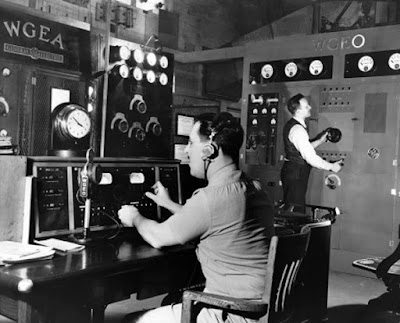M1GWZ writes: "Just to establish my DIY radio credibility, here is a photo of my contest-winning crystal radio. Unpowered, it has logged commercial stations from Ireland to Russia, and from Northern Norway to Algeria. Excuse the mess in the background - the workshop is being re-organized!"
 Carissimo Bill (I don't speak Italian. I'm just showing that I have read the book).
Carissimo Bill (I don't speak Italian. I'm just showing that I have read the book).
One of the benefits of early retirement after ten years in the electronics industry and twenty-five as a University academic is that one gets the chance to research one's interests and also have time to experiment with them. You correctly comment that you doubt you will have trouble occupying yourself in retirement - this is true, but be prepared for the frustration of not making as much progress as you would hope for! Chores still steal your time from you - and you have no excuse for avoiding them when you're retired.
I was recently alerted to the availability of your book via Kindle, but have only just got around to reading it (retirement...). It has been both a joy and a curse. Congratulations! It made fine reading in a couldn't-put-it-down way, but has also added several more items to my already-arm-length retirement project list. This, of course, is the price one pays for education and for evading the curse of boredom. As a radio ham friend of mine says with a sigh, "So many projects, so few lifetimes." As a result of reading your book, I am now pursuing satellite communication with my Yaesu handheld, and will put together a dedicated homebrew Yagi-plus-transceiver system in the New Year. The Baofeng two-bander handheld can now be had for £18 in the UK, so I can afford to dedicate one to the system permanently. Cheap technology to talk via satellites! So far, I have just been listening in - for the last three days.
I have been building radios and short wave listening since I was about nine years old. If it wasn't for a schoolfriend's father and a crystal set, I might not be e-mailing you now. (They are still talking about killing off MW AM transmissions in the UK. Sad for kids building simple radios, but good news for European DX! Swings and roundabouts. I'd like to give the Xtal Set Society www.midnightscience.com a mention - virtually all the recent crystal radio technology involved was discussed and developed on their forum. ) Upon graduating in 1980, I found a life without exams strange, so I took and passed my amateur radio licence exams as a way of learning more about electronics. Then life intervened (work, romance, microcomputers, marriage, job changes, son) and it was twenty years before I actually took out the licence. No Morse test so I was initially VHF / UHF only, but later the rules changed and I had a full (phone) licence. However, I only wanted to tinker about with handhelds when visiting friends in the USA (met via crystal radio forums on the internet), so my station consists only of a Yaesu VX-7R and a VX-2R (purchased at Dayton Hamvention) as a backup. I've never wanted to fork out the grand or so for an HF transceiver (although now I'm retired...), but I would like to reach out on 20 metres. Now, curse you, I realize that I have all the electronic parts to build a BITX SSB transceiver - and may have to do so. Another item on the project list...
Apart from amateur radio and DIY discrete-level DIY electronics, it turns out that we might have a couple more things in common. Through visiting the Dayton Hamvention, I now have many friends via the AMRAD club around Washington DC and have met quite a few hams from the Vienna and Loudon groups. I have attended Dayton for about the last fourteen years but circumstances change and we might now decamp to February's Hamcation in Orlando. Meanwhile, I live about four miles away from Kempton Park and have attended most of the rallies there, so there is a good chance that we two may at least have occupied the same room, albeit without actually meeting, on at least one occasion. It's a small, beautiful world.
Anyway, you're a busy man and I'm a verbose retiree, so I just wanted to thank you for the book and the inspiration it has given me to do more in ham radio. I also build DIY audio projects including (music) synthesizers, but at least I can use up a few more junkbox components before they're used to weigh down my coffin.
Regards,
Philip Miller Tate M1GWZ









































